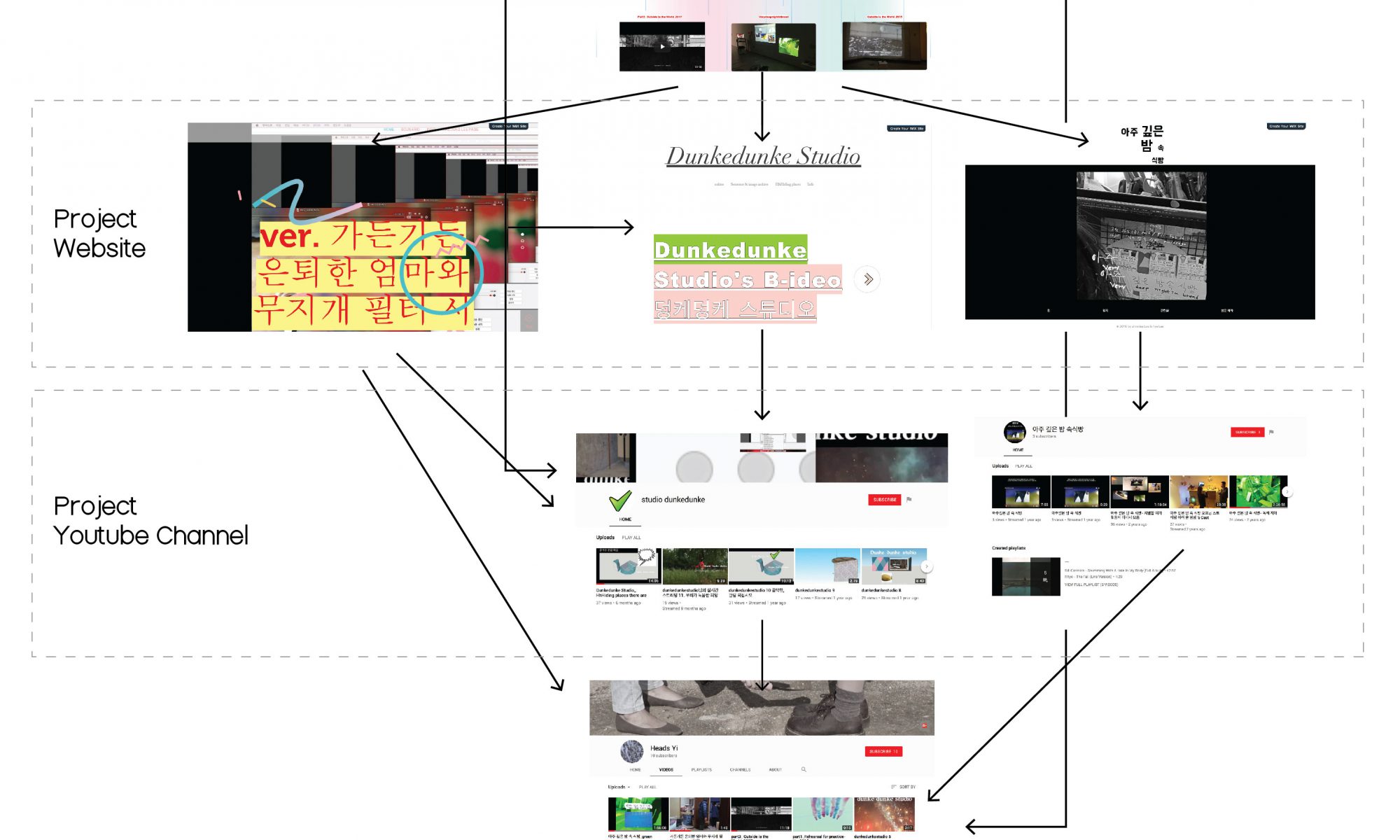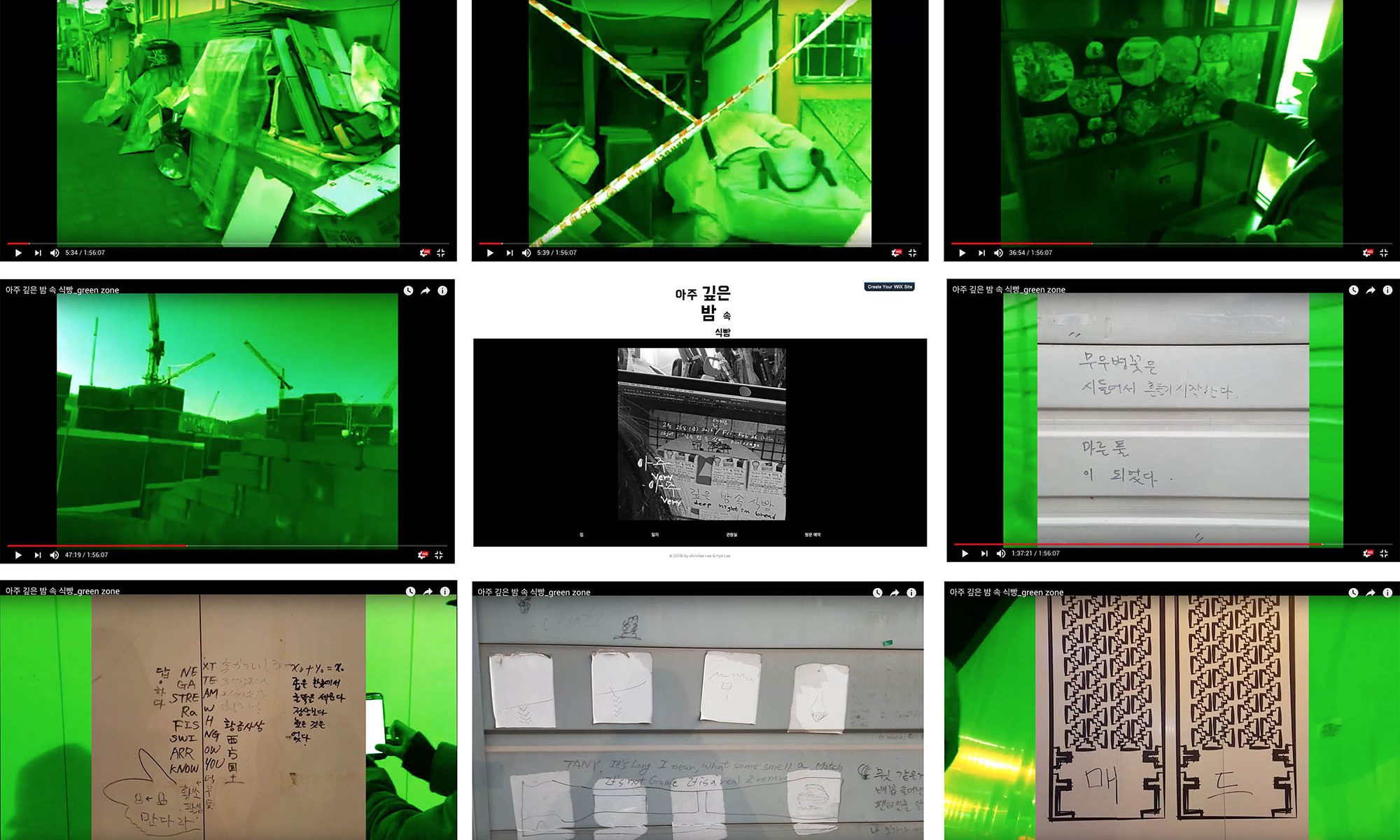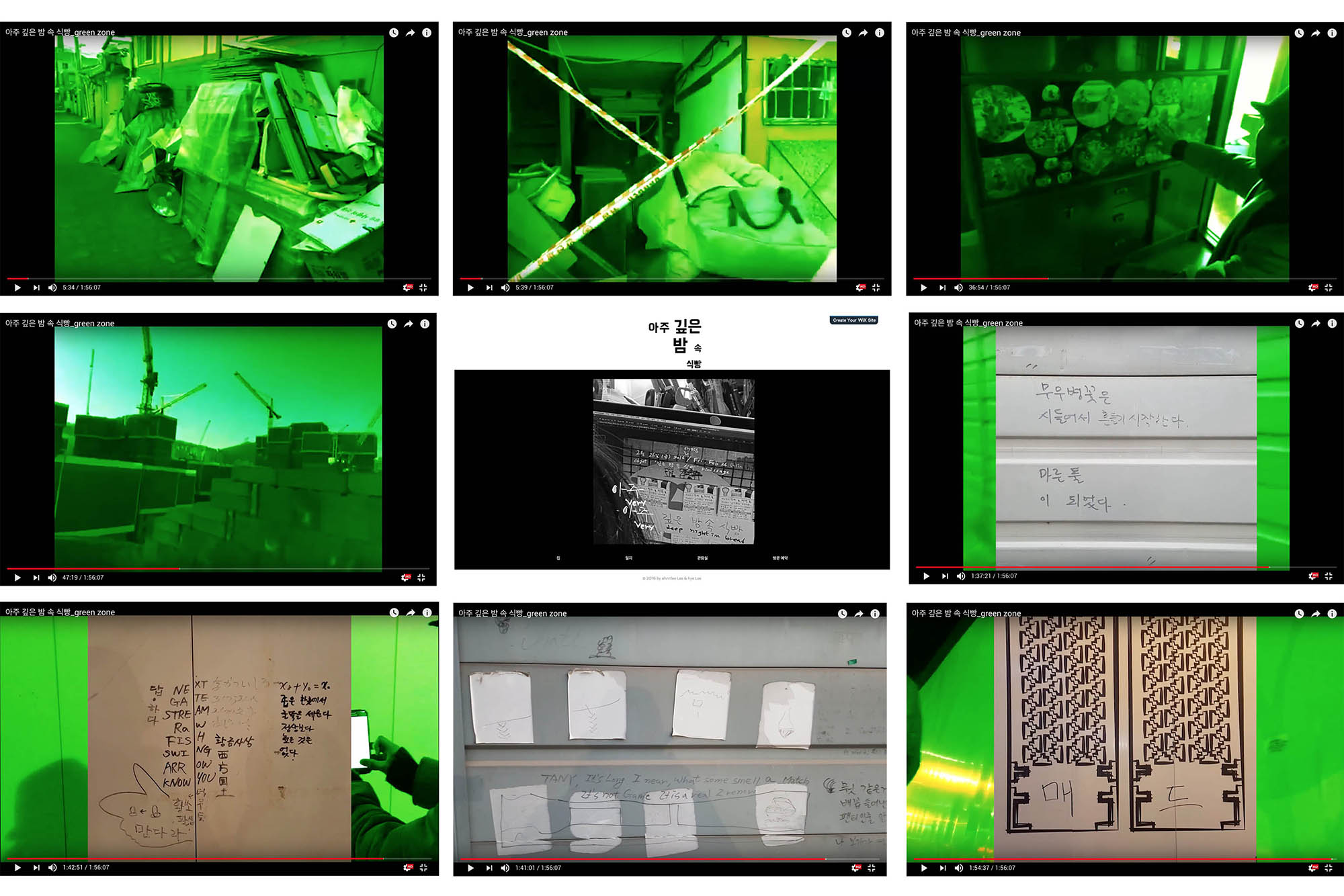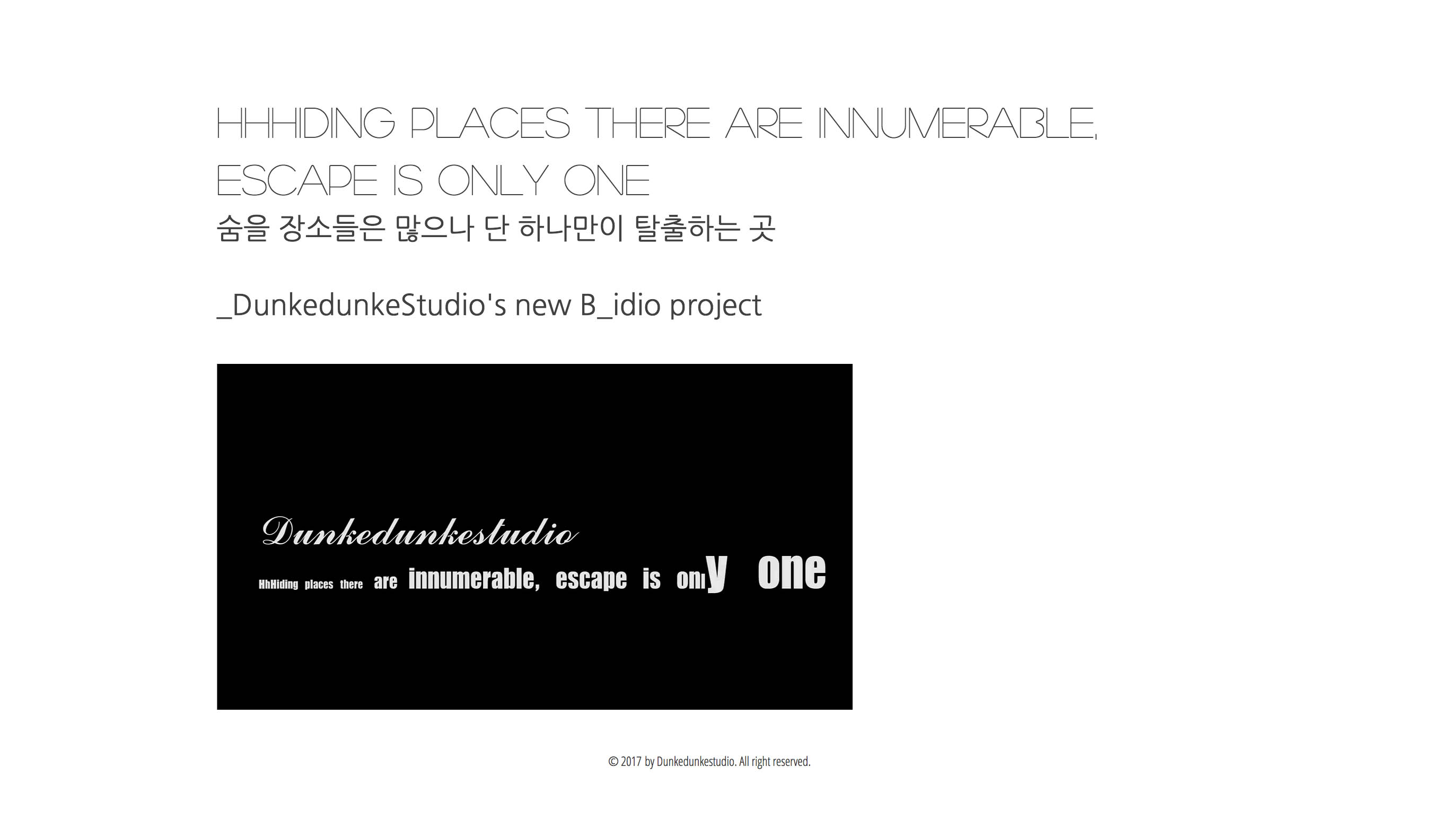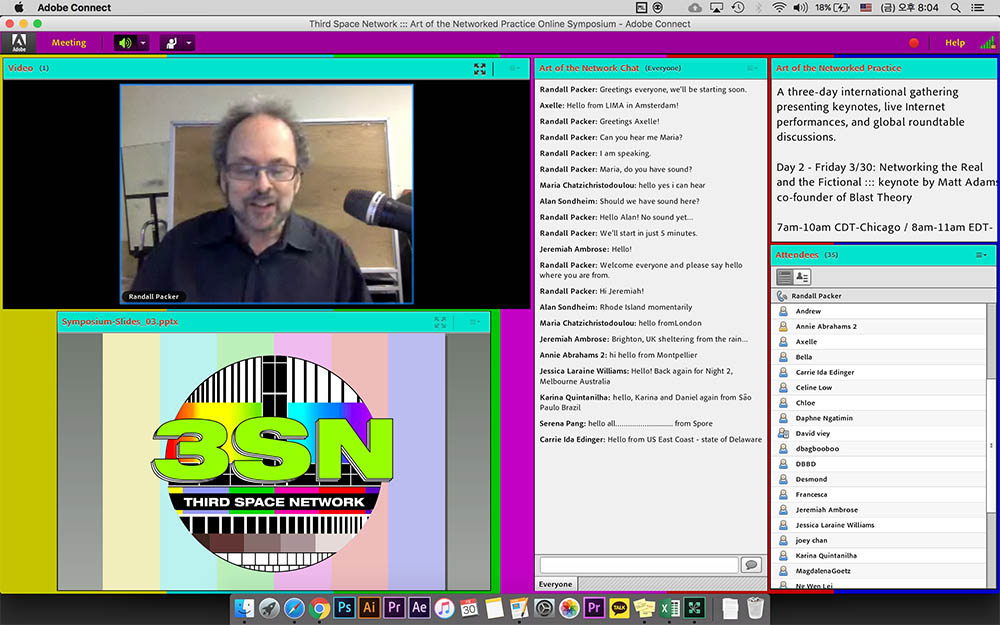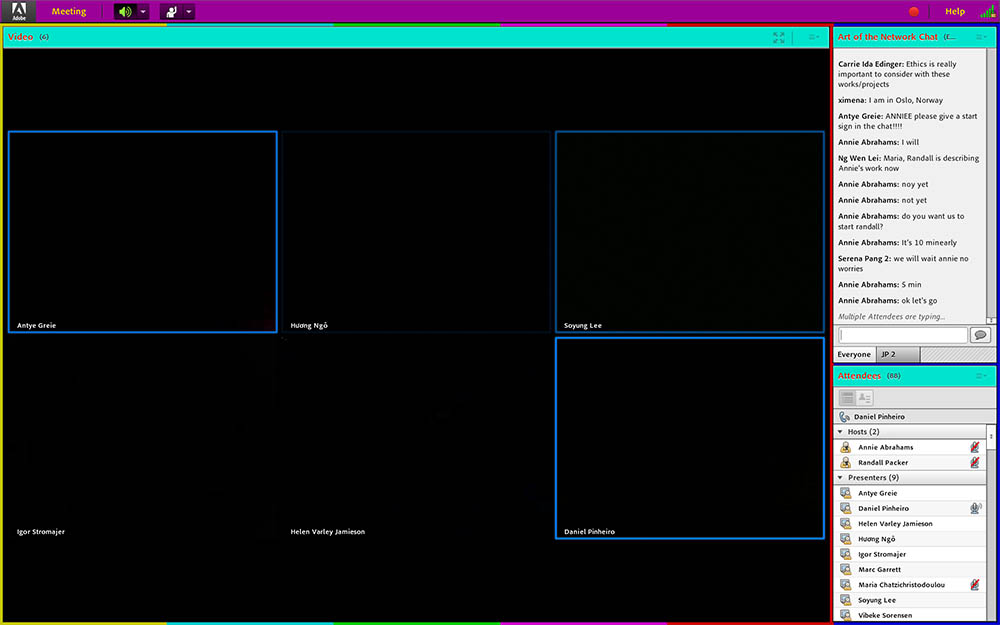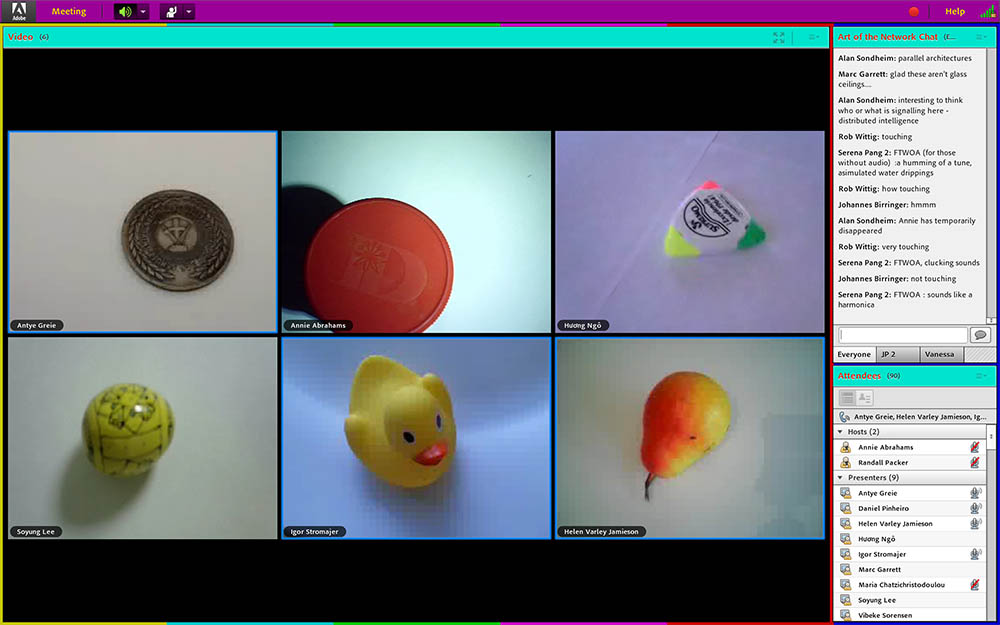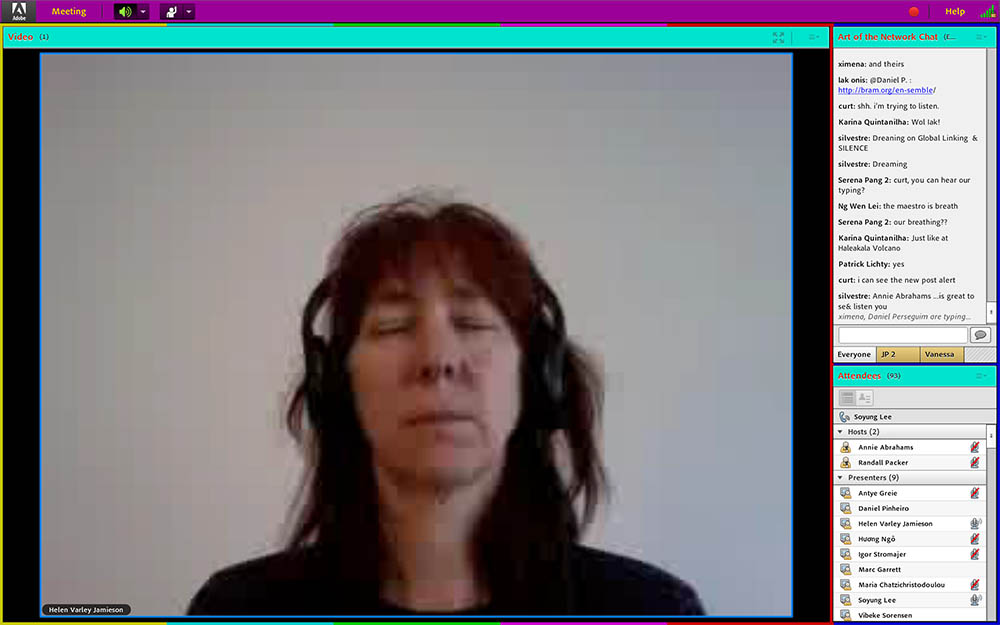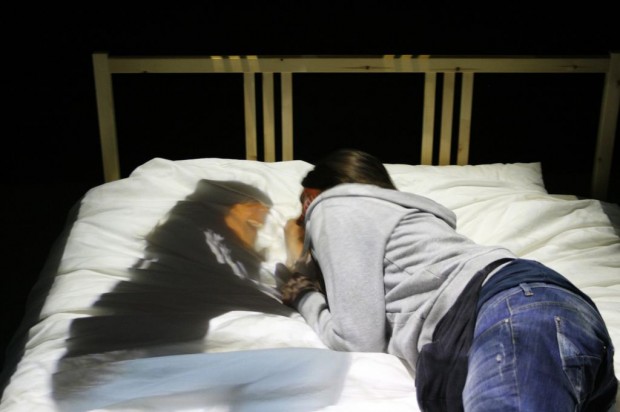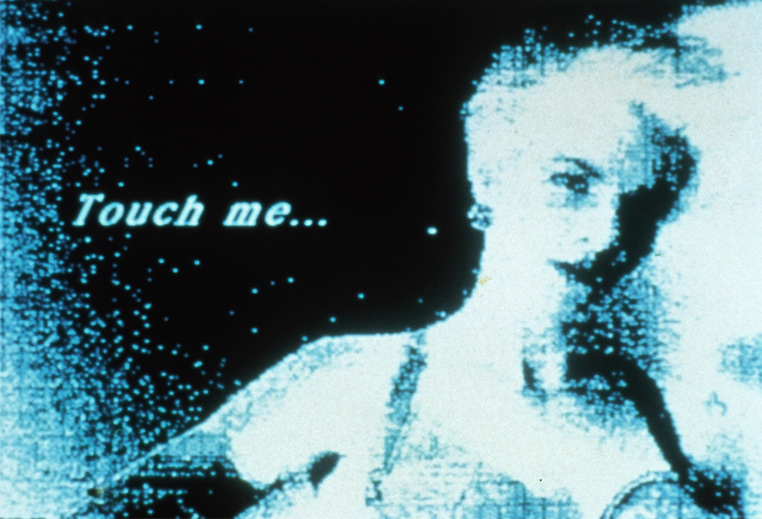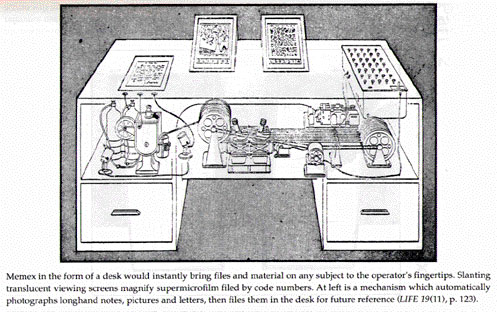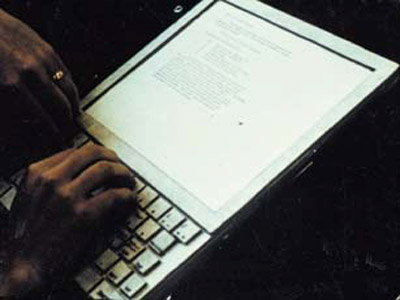이혜정 Lee Hye Jung (aka 이혜ㅈ Yi Heads )
Lee Hye Jung is a Korean media artist usually using live streaming on youtube and her own websites. She was born in late 1980’s and has lived in Seoul. She graduated from the Korea National University of Arts with a degree in Fine arts. She tries to capture lost stories in daily life using camera and live streaming before they are gone. She creates websites and Youtube channels for practices to arrange the images and videos.
Very deep night in bread (아주 깊은 밤 속 식빵) / duration 01:18:03 / 2016
Very deep night in bread is her first work using live streaming. She said that she had to take the video right at that time because the place where she took was in the middle of reconstruction. She thought if she didn’t take the video at that time, it could be destructed next week. So she choose the live-streaming method to take, document and upload(exhibit) it simultaneously without editing. By doing so, she tried to document the stories left behind the place and put them on the never disappeared space, which is online virtual space.
The place in the video was a historical place in Jongno-gu, Seoul. It was an old downtown from Joseon dynasty. But these days, this historical place is in danger to be reconstructed to huge apartment complex by major constructing company. She encountered the opportunities to get into this place secretly. Also she took some photos of scribbles on the wall and edited the video with this photos later. Some of them were very poetic, some of them were expressed the writer’s anger and some of them didn’t make any sense.
Review
Rather than editing to make a powerful storytelling, she decided to upload the video clips without editing, just following the place and time. Her video clip which is moving and shaking with low resolution is floating among tons of thousands of video clips on Youtube. By using live-streaming, she tries to connect the physical world and virtual world seamlessly.
She documents fragile stories which is disappeared as soon as it turns out. In Very deep night in bread, it is the historical place as well as the native’s land which was broken. In ongoing project of Dunkedunke studio, it is the general and trivial stories which is spoken and faded away simultaneously in daily life.
Dunkedunke studio (덩케덩케스튜디오) / project / 2016 – now
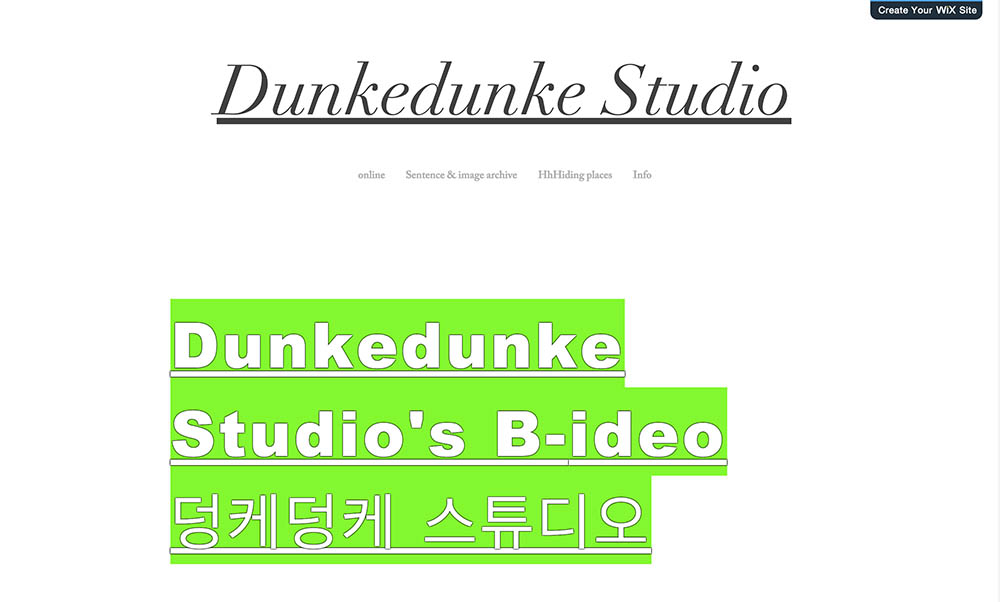
Dunkedunke studio is a video streaming project made by a virtual media collective. Dunkedunke studio calls their video ‘liquid piece’, floating on the video platform ‘Youtube’. Liquid piece is the result of combining texts and videos that they took. They try to express the arbitrary state of the live streaming process by choosing this word. They embrace the variable and glitch as a basic condition of liquid piece during web streaming.
- 1. Dunkedunke studio is video artist based in Seoul, we are a duo formed by a real person and fictional character. the real character is collecting for events and a fictional character removes it through the live streaming.
2. Dunke _ dunke is a pure Korean language characterized by thick liquid flowing into a lump
3. The Dunkedunke studio’s video is the first archive image of video that is sent in real time using ‘web streaming’. Starting from the denial that dreams and life may be all false, we pay attention to the form and state of another space between virtual and reality. we search for ” lost story ” in a world where the real and bogus are entangled. we call the random text made video a ‘liquid piece’. This is a word that expresses the process of becoming an arbitrary state in the process of live-streaming an image.The process of reuniting by the repetitive attitude of writing and erasing of two persons, who are set as real figures and virtual figures, is regarded as a kind of escape,
4. dunkedunke Studio is helping to escape stories that are going to disappear from now on
- -Introduction of Dunkedunke studio, https://dunkedunkestudio.wixsite.com/dunke/blank-cazn
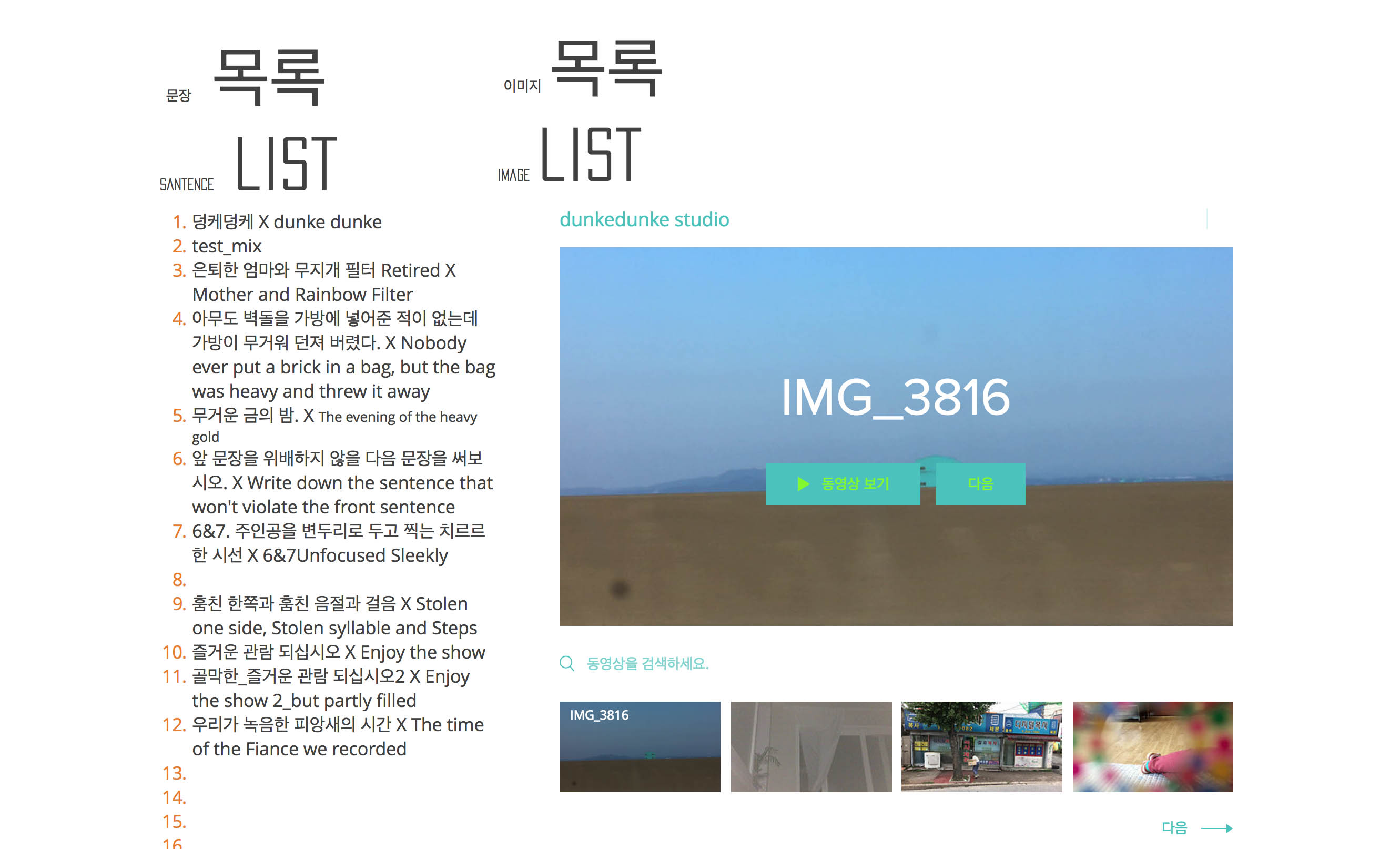
Until now, they made total 12 live streaming videos which have all different poetic titles. These works were made by YiHeads and her virtual partner (another herself) to experiment ‘the form of another space between virtual and physical reality’.
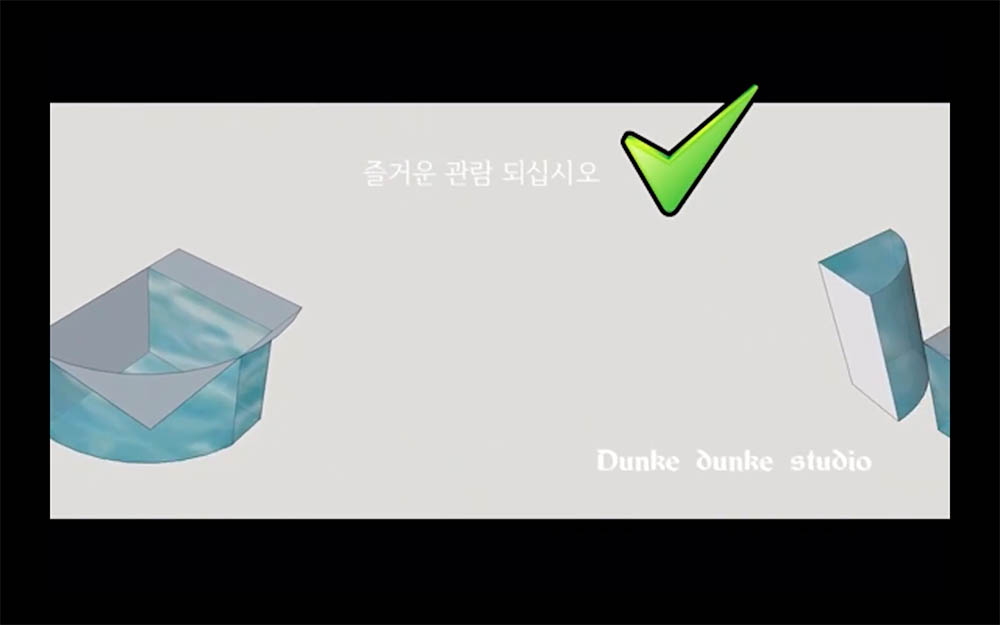
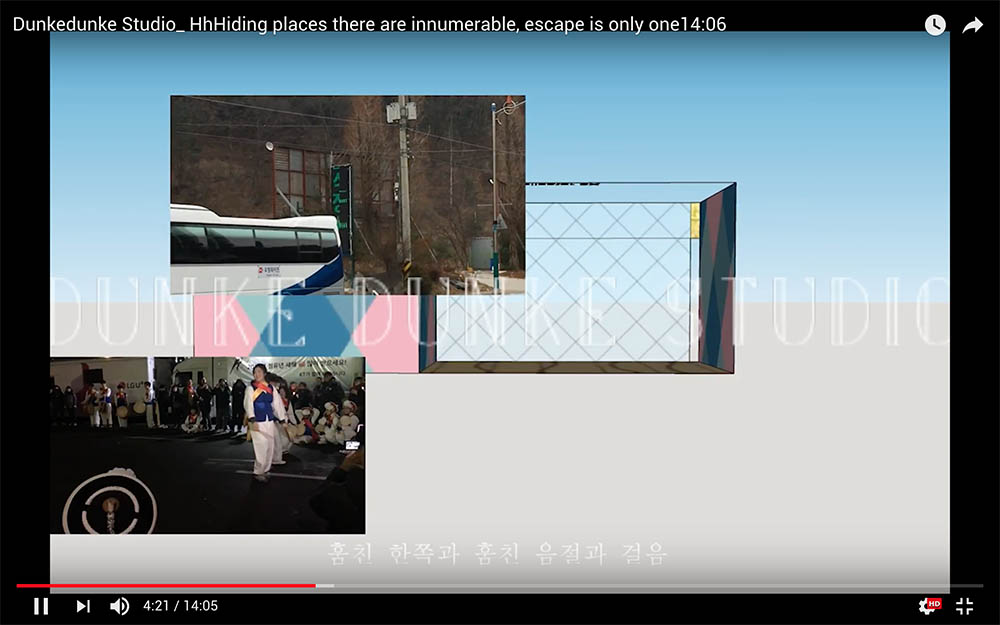
Dunkedunke Studio(2016-Now)
In this virtual collective, ’YiHeads’ collects sound, phrases on the internet, pictures from other people and abandoned objects. ‘Virtual anonymous character’(Another YiHeads) edits and transforms the images via live streaming. They said that collecting could be said ‘writing’ and live streaming could be said ‘erasing’. By repeating writing and erasing, they try to ‘escape’ the stories which are abandoned in the real world. The concept of this group collaborating with ‘a virtual partner’ is a strategy to approach invisible area such as virtuality, myth and dream etc. As a result, her work is based on virtuality and illogic noise from the beginning.
Review
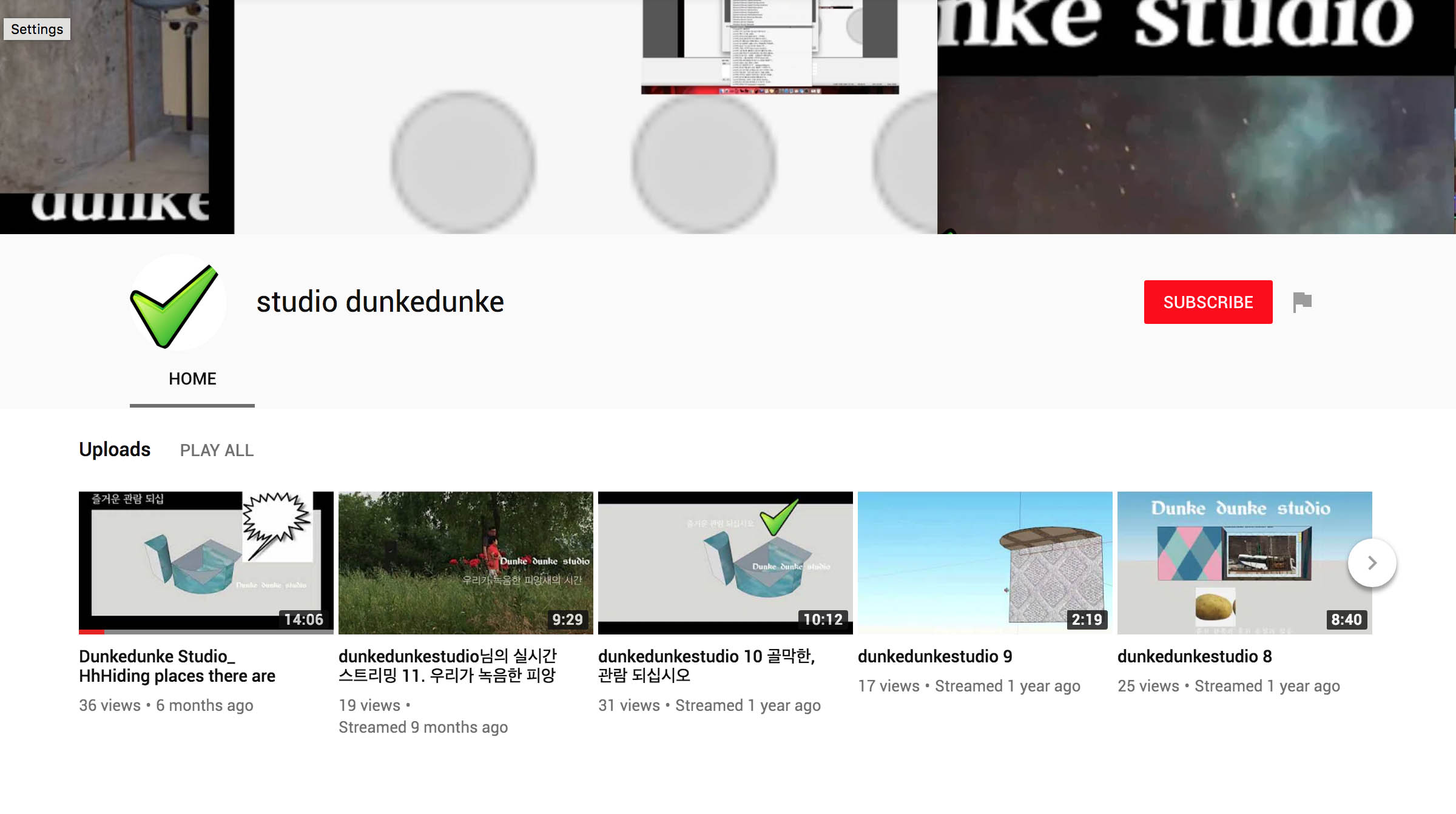
Actually, the possibility being able to find her vague titles and low hits videos on Youtube search result is very rare. Youtube is already full with enormous amount of videos. Even the quality of the contents has been improved. Her glitch, error, low resolution videos are not proper for attracting people’s attention. But I would like to focus on how she uses Youtube system in her project.

Some of her works were made using OBS software, which is ‘a free and open-source streaming and recording program maintained by the OBS Project’, according to Wikipedia. She connects her desktop streaming to Youtube using this software. It looks she fills the screen with repetitive windows and video clips just like painting on canvas. She increases or decreases the windows size and drags them on the screen.
According to what dunkedunke studio said, it is an action of erasing what she collected. Most of her images are very trivial and private, such as her living room with a lot of laundry and her mother’s leg, or the fragmentary images on the street in daily life. Why does she collect and stream this images? In her words, why does she ‘write’ and ‘erase’?
In my opinion, this process is to embrace lightness of her images and put them on the everlasting world, a online virtual world. For her, Youtube is where the images are accumulated and became memories of public. It means Youtube could be very political space at some point. She tries to use the platform as a political place of ‘memory’.
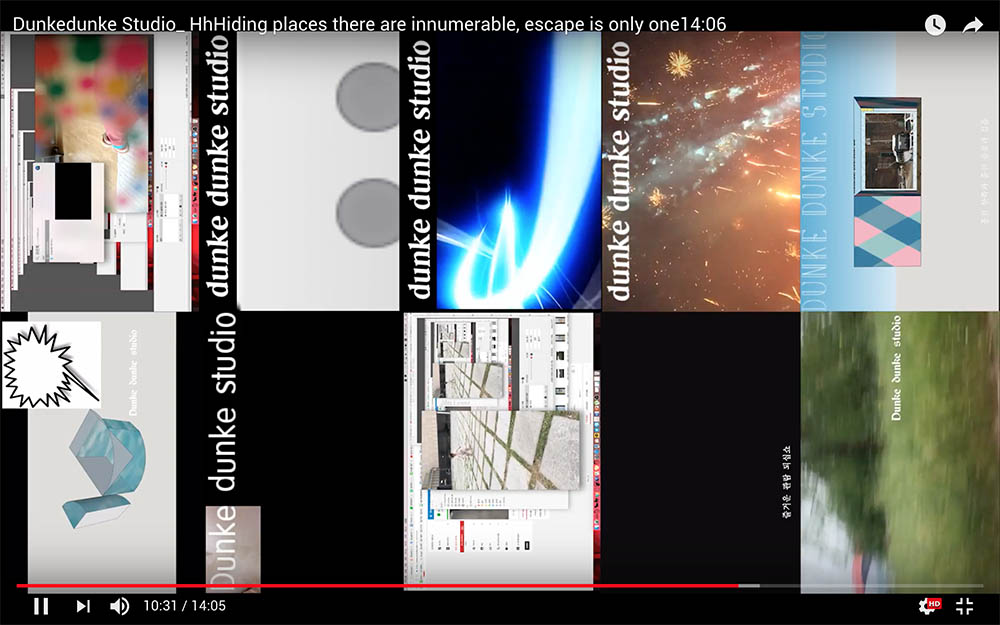
Her works still remain in one to many traditional broadcasting approach, but she gives the power of broadcasting to fragile stories. She gives trivial voices a chance to be spoken. Her live streaming is more close to artistic documentary than a dialogue. Her works explore the live streaming as an artistic and documentary expression.
Website+Youtube = A space for media practice
YiHeads uses free online platform to organize the system of linking data. She produce the website for each project using free web development platform ‘wix.com’. Also she makes Youtube channel for each project to archive the project videos. The direct and indirect links to youtube channel and videos are scattered around her websites. On her website, there are poetic descriptions which explain about the project. And all the websites and youtube channels are archived on her main website.
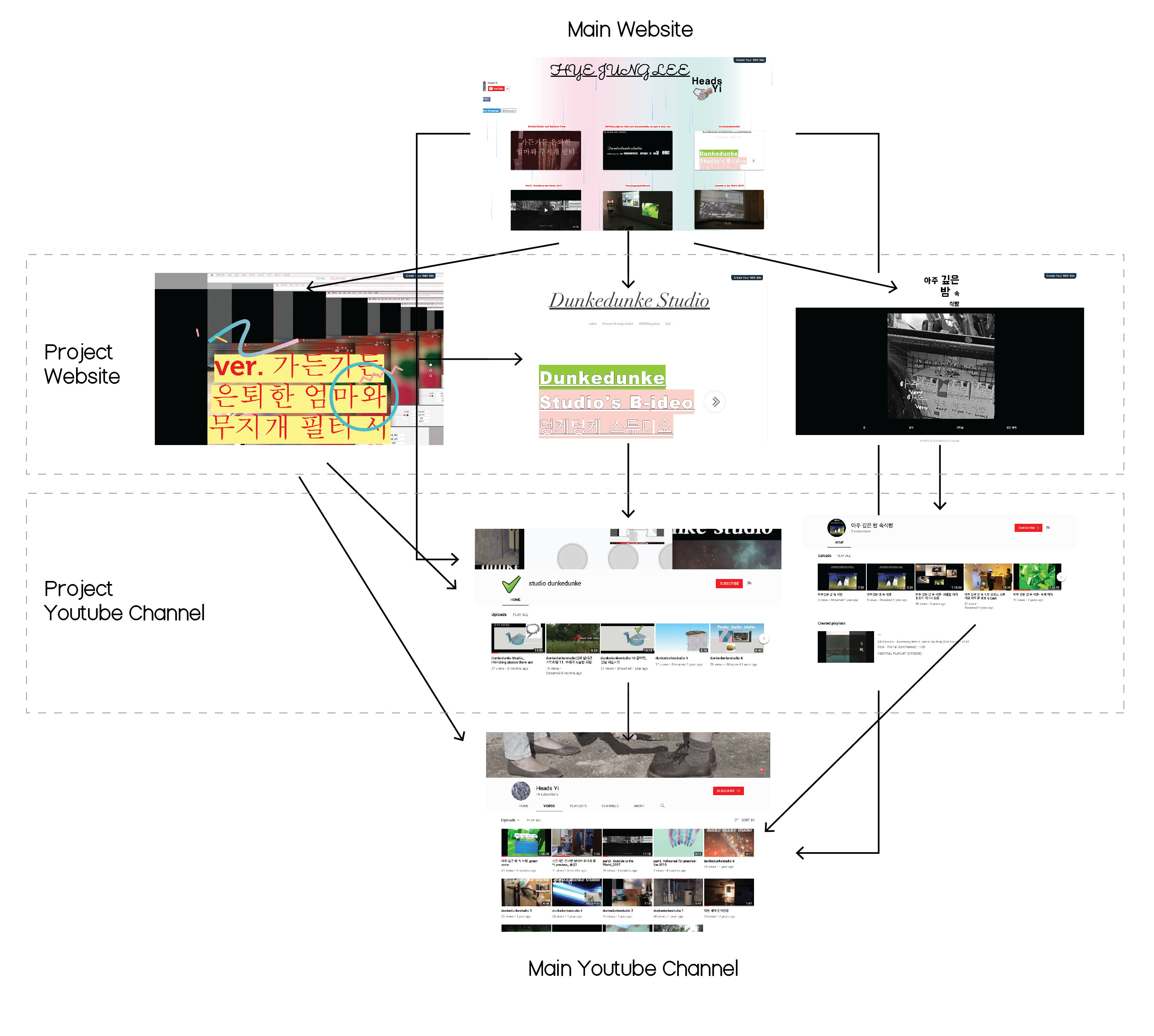
It is like an action to expand her territory(domain) in online. If ‘window’ could be a virtual territory that one person could get on the internet, she keep at expanding it.
I think this virtual territory would be able to become an associative system for exhibition. As we can read on Alan Kay and Adele Goldberg’s essay, the non-sequential nature of the internet and web browser could give viewers many accessible points of view. It is quiet different experience from that we could get in a physical exhibition.
The non-sequential nature of the file medium and the use of dynamic manipulation allows a story to have many accessible points of view.
–Alan Kay and Adele Goldberg, “Personal Dynamic Media,” 1977, The New Media Reader
In other words, YiHeads use online platform as a ‘virtual exhibition space’. An exhibition in a gallery is designed with viewer’s movement. If you go to an exhibition, you might go through an exhibition title, preface on the wall and physical works in order. The websites and youtube channels share this role of exhibition space. The viewer can get some information of artist and her works through websites and watch her video works on Youtube. Window on the screen is a wall, floor as well as a space in her projects.
The human mind does not work that way. It operates by association. With one item in its grasp, it snaps instantly to the next that is suggested by the association of thoughts, in accordance with some intricate web of trails carried by the cells of the brain… Yet the speed of action, the intricacy of trails, the detail of mental pictures, is awe-inspiring beyond all else in nature.
-Vannevar Bush, “As We May Think” 1945, Multimedia: From Wagner to Virtual Reality
YiHeads digitizes lost space and time into digital memories by uploading them on Youtube. Developing the website and youtube channel is an action of pushing the memories into the big data. To be short, she leaves some traces of the stories which nobody would remember, on the internet. By doing so, she could put these memories into the association system of the internet. If somebody encounter her video by any chance, what will he/she think about it?
The possibility of alternative artistic space
In Seoul, there are some struggles by young artists to show their works independently. Young artists who were born from 1980’s to early 1990’s don’t want to just work and wait for the opportunities of exhibition. They curate the exhibitions of their own and others. Most of them get their physical studio and make their exhibitions. It is not different from an exhibition in a gallery. They just move the form of exhibition from galleries to their small, private studio.
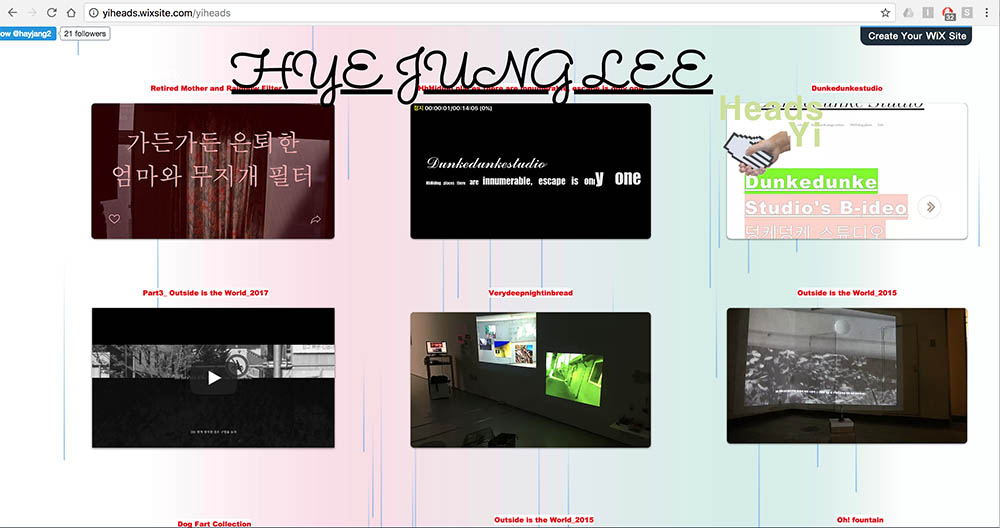
I think YiHeads’ practice could be interpreted as one of this efforts to show her work independently. She doesn’t have any physical studio but she cleverly constructs her own studio in online space. In my opinion, it could be a power struggle as an artist against main art stream. There are already very solid community and art scene in major art world. They have money and physical spaces which young people would never get immediately. What could be the alternative in this situation?
Media environment has the possibility of alternative space for young artists. I would say that this approach could decentralize the art world. It could distribute the power that few major galleries and museums have to artists and viewers. Media is an accessible space to share artist’s work with viewers in different way compared to traditional exhibition.
